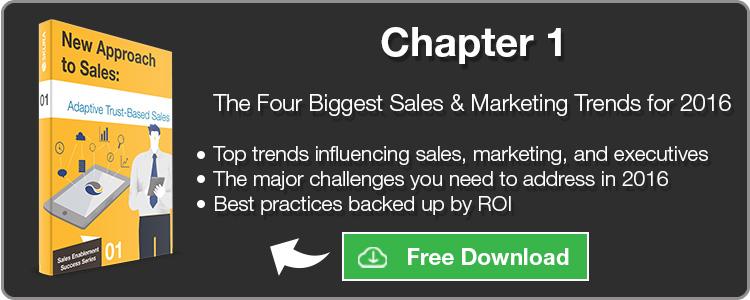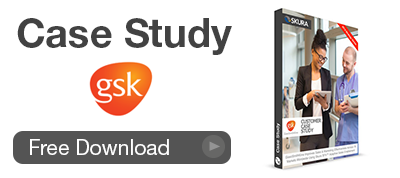Healthcare is going digital around the world, but many pharma sales and marketing executives are reluctant to experiment with newer digital channels.
This gap adds friction to a traditional sales process that is already eroding because of the influence of technological and social challenges – according to some.
Today’s article explores the need for e-detailing in pharma sales and marketing, and how digital detailing applications both enhance pharma sales and delight HCPs at the same time.

The Current Situation
The 2015 Digital and Multichannel Marketing Customer Survey from Quintiles revealed an updated set of facts and figures related to pharma sales reps and their use of traditional detailing and new e-detailing strategies.
Quintiles notes three basic strategies for pharma sales interactions:
Live Channel – in person, one-on-one interactions that can take place over the phone or face-to-face, often with the company’s most valuable customers. These are recorded and tracked in the company’s pharma CRM software. Interaction inputs can be automated and/or manual.
Personal (digital) – personalized and tailored digital interactions that reflect the recipients’ interests. Also known as edetailing pharma, this can include personalized emails, social media interactions, and one-on-one live virtual (co-browsing) meetings. The interactions are tracked on a delivery platform such as pharma sales enablement software, and this may include pharma CRM integration for complete automation.
Non-Personal (digital) – HCPs accessing information through widely available channels. These include websites, blogs, and bulk emails. Personalization does not occur at this level, and interactions are typically tracked via cookies and an automation platform, or at an aggregate level.
So, which engagement strategy is the best?
Liz Murray, senior director for multichannel strategy at Quintiles suggests that “the future belongs to an integrated multichannel approach, based on a combination of live, personal and non-personal digital interactions.”
How e-detailing Improves Pharma Sales and Marketing
Channel Reach with Preferred Interactions,
Both patients and HCPs increasingly use digital channels, sources, and devices to access healthcare related information, but these sources fall under the ‘non-personal’ category of digital sales content.
This means that the information may not be relevant to the HCP, and they may draw the wrong conclusions.
In-person detailing is still a popular tactic for communicating pharma manufacturer products and services to HCPs. However, this strategy is time consuming, requires specific and rigid scheduling, and doesn’t guarantee outcomes for the HCP or the pharma sales rep (PSR).
Meanwhile, 91% of HCPs stated that they were willing to repeat the experience of having an e-detail for the following reasons (Source: Quintiles, 2015):
- Ease of rescheduling;
- Better fit into work schedule;
- No need to commit to being at work;
- Clear time savings.
E-detailing improves customer engagement from healthcare professionals.
- Doctors spend an average on 7.5 minutes per e-detail versus 2 minutes for a traditional sales call; and
- 89% of HCP reported that e-detailing was a faster way to obtain information (Source: EyeForPharma, 2006).
Content Management with Desired Engagement,
HCPs have less and less time to commit to a dedicated sales presentation meeting, and they are growing distrustful of PSRs because of mismatched objectives during the meeting.
A 2016 study by Health Link Dimensions revealed that only 11% of HCPs preferred an in-person visit from a company representative.
Quintiles’ research supports this view, where almost two-thirds of physicians agree that e-detailing represents the future of promotional contact, and want to spend half of their engagement time through this channel.
Although a face-to-face interaction builds trust and a solid foundation for relationships, the approach is disconnected from the time-strapped nature of today’s healthcare industry. E-detailing breaks free from traditional paper-pen interactions and adopts a sales stack approach that facilitates the needs of a contemporary healthcare buyer.
Content management software like pharma sales enablement creates a more effective PSR by optimizing the search and find process for medical sales content. Almost half of HCPs say e-detailing is more effective than face-to-face, and 75% of HCPs expect their prescribing to increase as a result of digital personal engagement.
Implicit Analytics with Automated Compliance,
Communications in the life science industry are scrutinized by heavy regulations that ensure PSRs are accurately representing the effectiveness of their products. Because of this, pharma manufacturers can be reluctant to adopt new technologies across a traditional and compliant sales process.
Furthermore, the touch-and-go nature of pharma sales means that multiple PSRs could interact with one HCP throughout the customer life cycle. PSRs are often manually updating a pharma CRM system with anecdotal information so that other representatives can continue a discussion in the future.
Dedicated edetailing pharma software, like sales enablement, mitigates both challenges with sales performance management analytics can track interactions and filter digital sales content in accordance to compliance regulations.
Pharma sales enablement also integrates with CRM to automatically write profile updates in real time, and enable the PSR to access the CRM on any mobile device.
This process of automated CRM updating is called closed-loop-marketing, and these real-time insights help marketing and content teams create material that effectively supports the sales process.
E-detailing with Sales Enablement
The benefits of e-detailing are clear, and many HCPs prefer a digital approach that enables them to guide their personal decision making process on their own time. As explained by Liz Murray, “the field role offered a 1:1 interaction… and it is that relationship that needs to be brought up to date.”
We worked with GSK to enable e-detailing that pushed the right content to the right PSRs, unlocked new channels to reach HCPs, automated pharma CRM data, and strengthened sales and marketing alignment across communications. You can read the case study below for more information.
What Content Do HCPs want from PSRs?
Adopting e-detailing and pharma sales enablement across your sales process is the first step to enhancing digital engagement with your customers.
The next is using the right content across your interactions to receive the engagement you’re looking for. In our next article we’ll explore the top content types preferred by HCPs.
Interested in jumping right into pharma sales enablement, and seeing the difference first hand? Request a demo and let our sales professionals show you how easy e-detailing can be.













